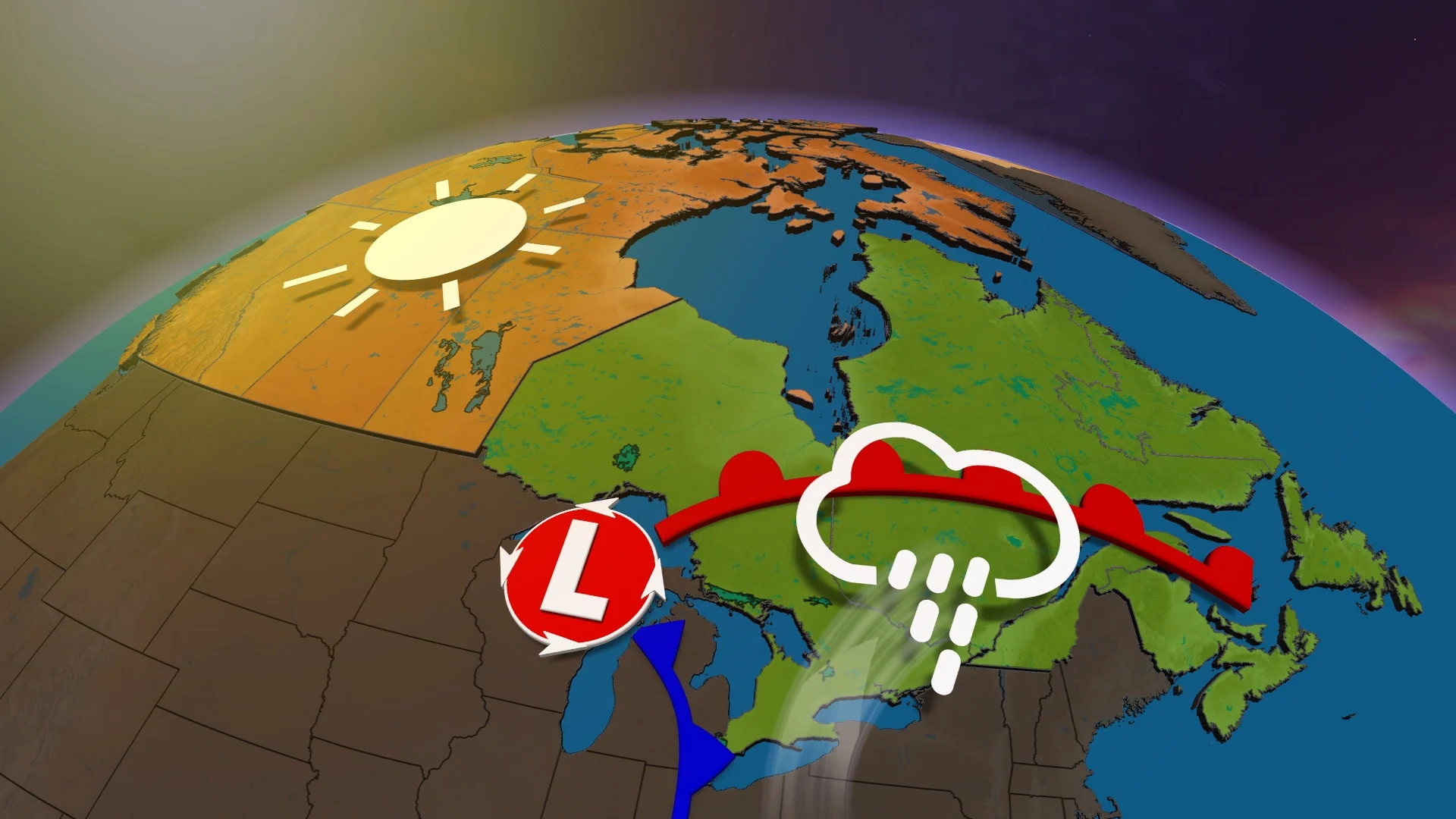
Floods and wildfires mark Canada's 2025, but what about drought?
Plenty of rainfall events have tipped the precipitation scales in parts of Canada, but there are several locales that have missed out on them and are sitting on the dry side of things at the moment
Canada has seen a few soaking-rain events in 2025 that have generated flooding, and hundreds of wildfires that have prompted states of emergency in multiple locations.
So, that begs the questions: What about drought? Where has it been dry this year so far?
SEE ALSO: 30°C summer heat spans over 2,000 km from Ontario to Labrador

The short answer is that most of Canada has been at times since the start of growing season in April, including parts of the Greater Toronto Area (GTA), Ont., Montreal, Que., the Maritimes and Newfoundland. However, many of these places have seen precipitation totals bounce back in a significant way, in one or two major rainfall events.
Read below to find out where the dry spots are in Canada at the moment.
Where are the dry spots across Canada?
Timmins, Ont., had its wettest June on record, and through the end of the month, it has seen its wettest growing season on record with 333 mm of rainfall (184 per cent of normal).
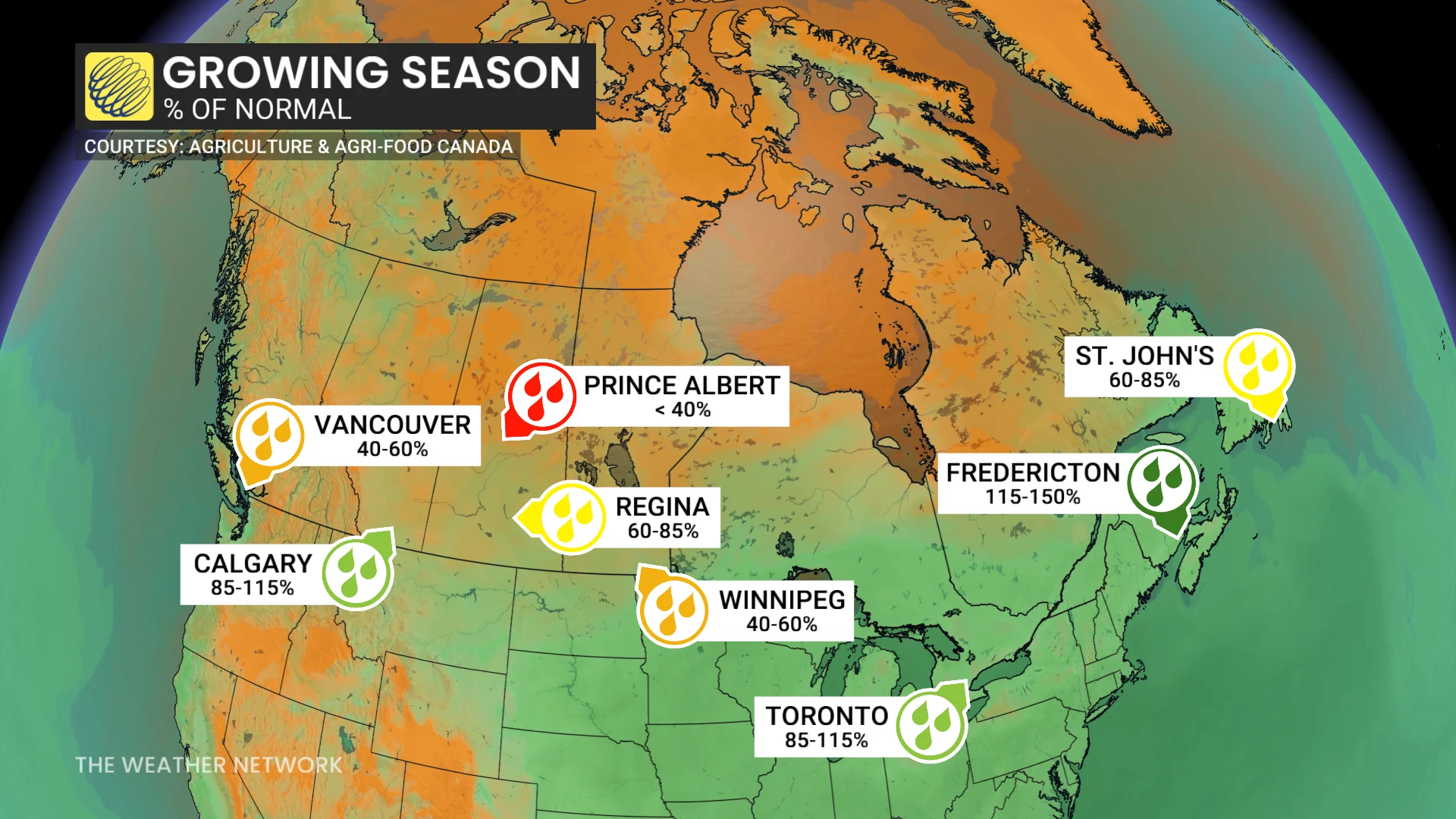
Two of the major fire regions, northern B.C. and Alberta, have been the driest regions this summer.
Fort St. John, B.C., is an interesting location, having only received 58 per cent of normal precipitation since April 1, but more than half of that came in a 48-hour window in mid-June.
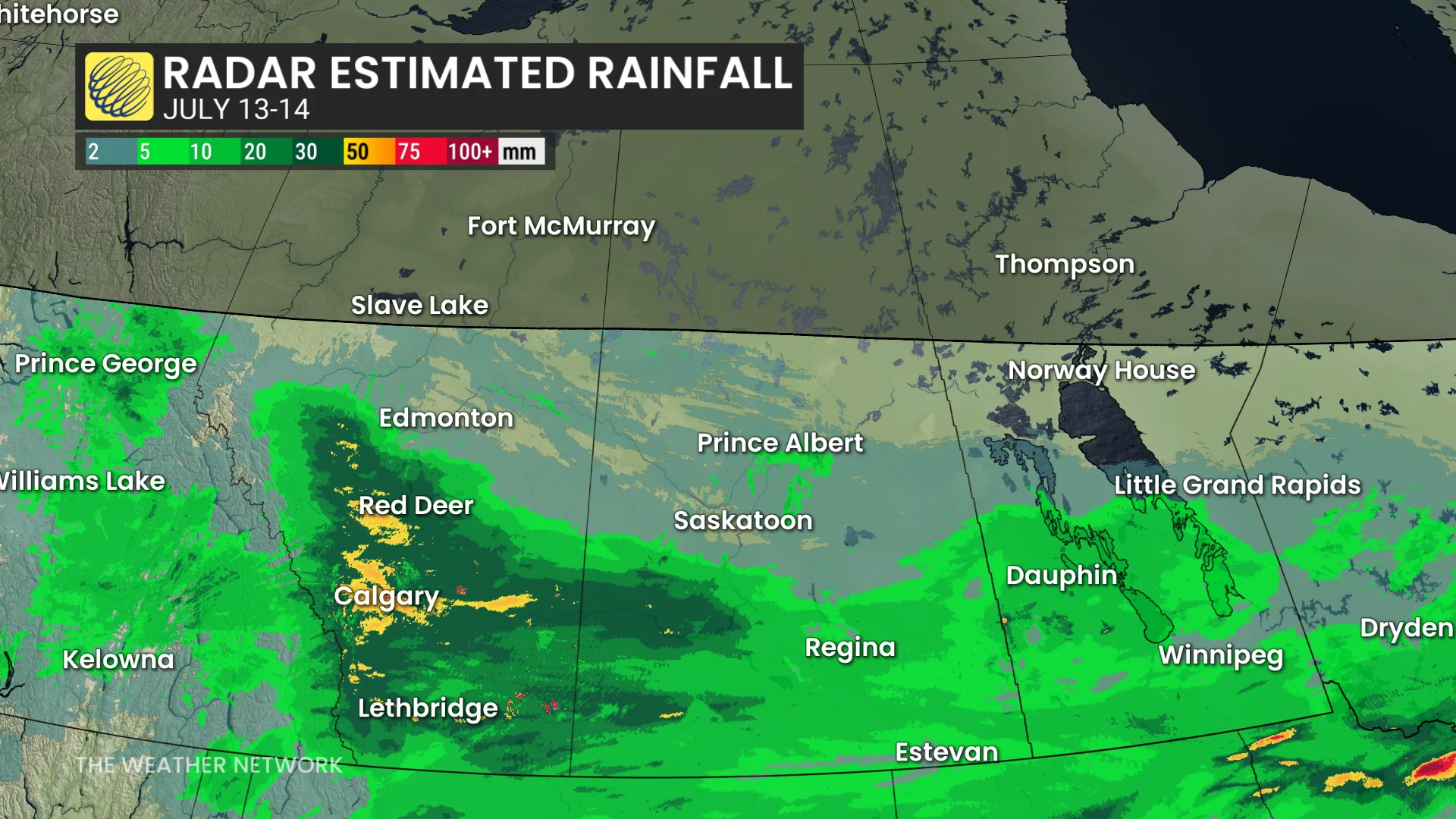
Meanwhile, a significant part of southern Alberta has lost the drought status, thanks to numerous rainfall events.
On the other side of the Prairies, areas east of Lake Superior has been above normal for precipitation since April 1.
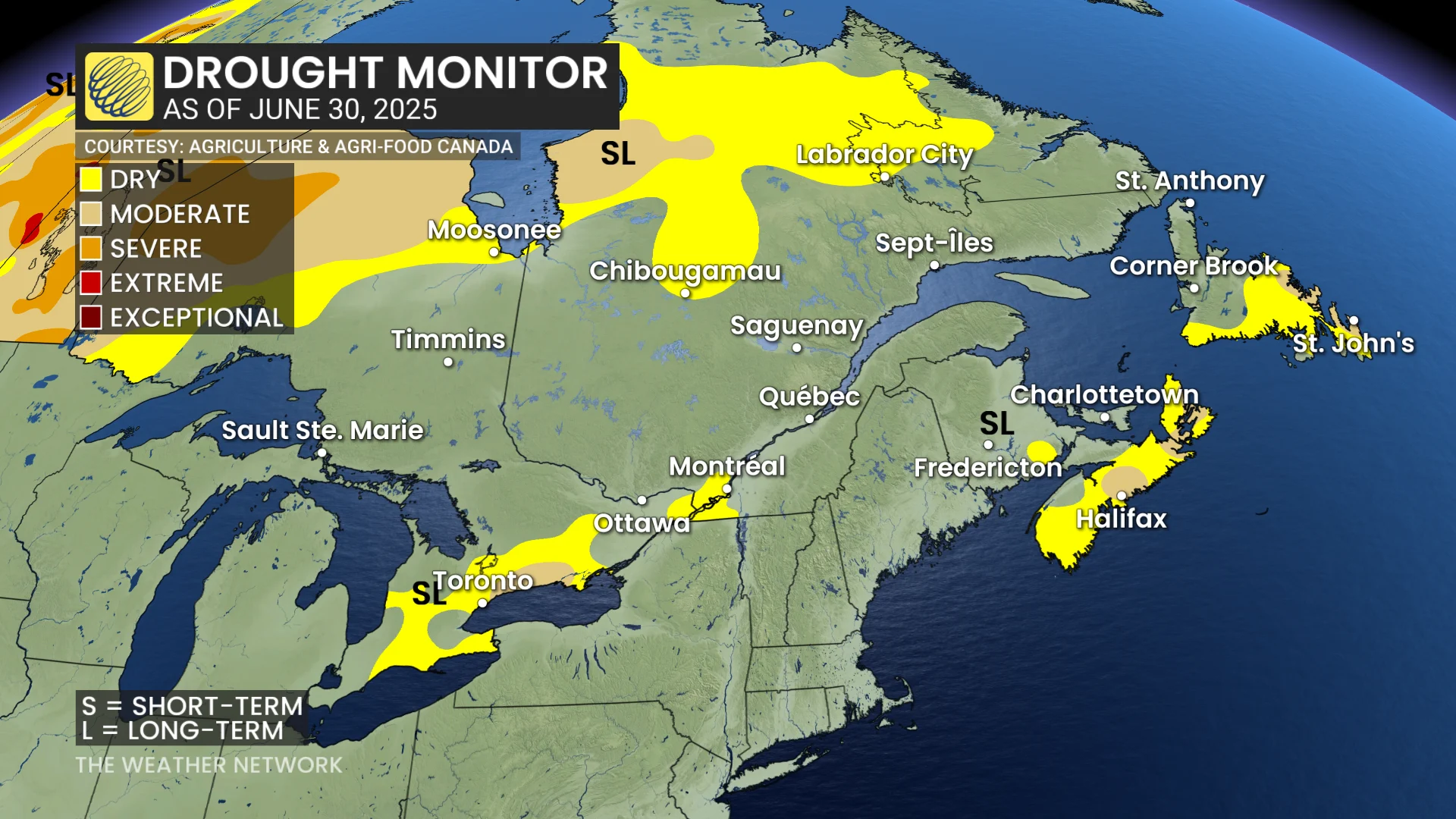
The first half of July has also been above normal for temperatures across Eastern Canada, but with the moisture already in place, that should slow the drying process as the moisture will fuel a positive feedback look of fuelling thunderstorms. That will simply transplant the moisture down the road.
The award for the wettest city so far has to go to Quebec City, having surpassed its average by more than 100 mm (480 mm total) by July 14.
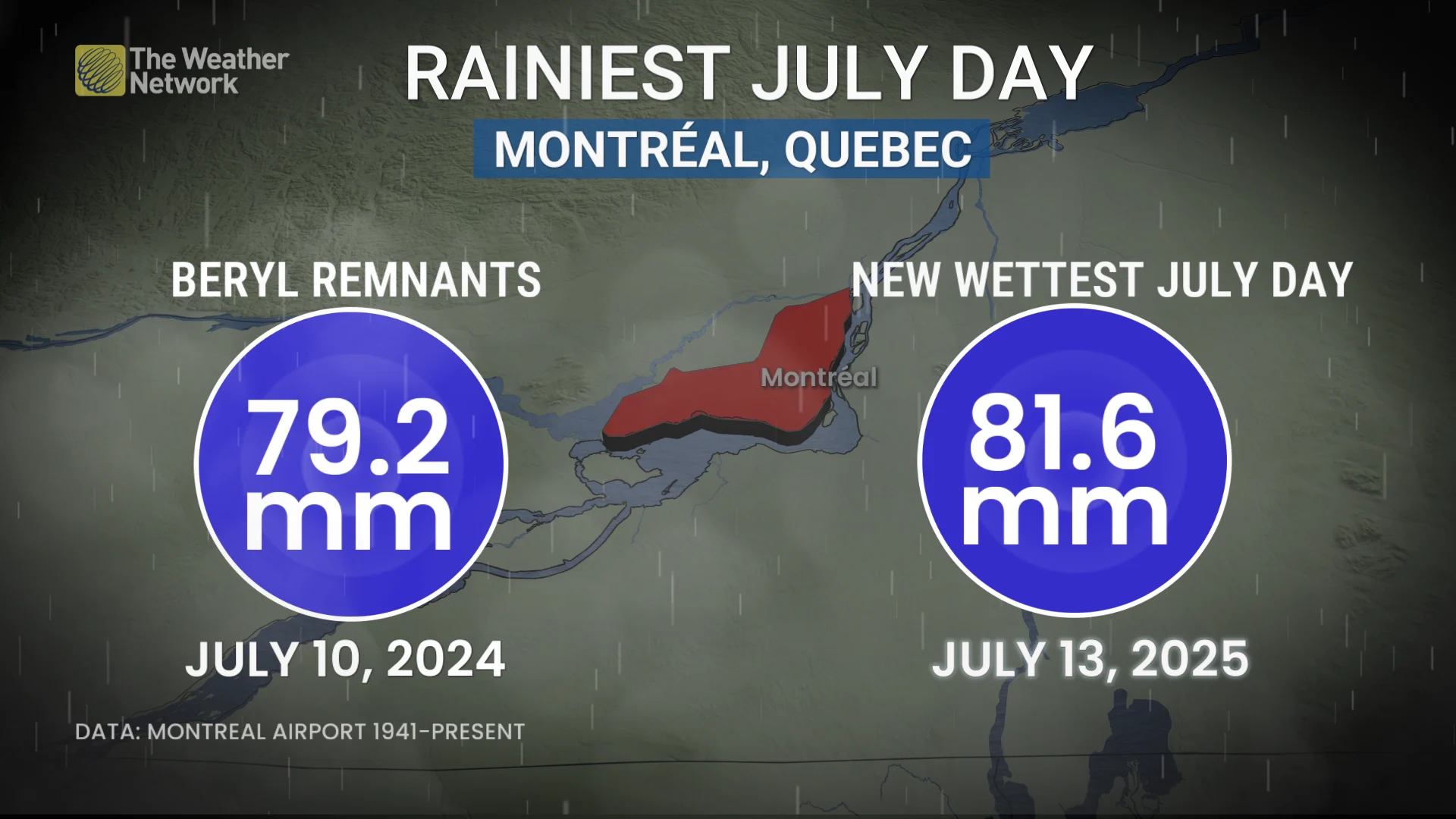
Montreal saw its rainiest July day on record, setting a perfect example that seasonal statistics can be skewed by short-term outliers.
With files from Kevin MacKay and Rachel Modestino, meteorologists at The Weather Network.
